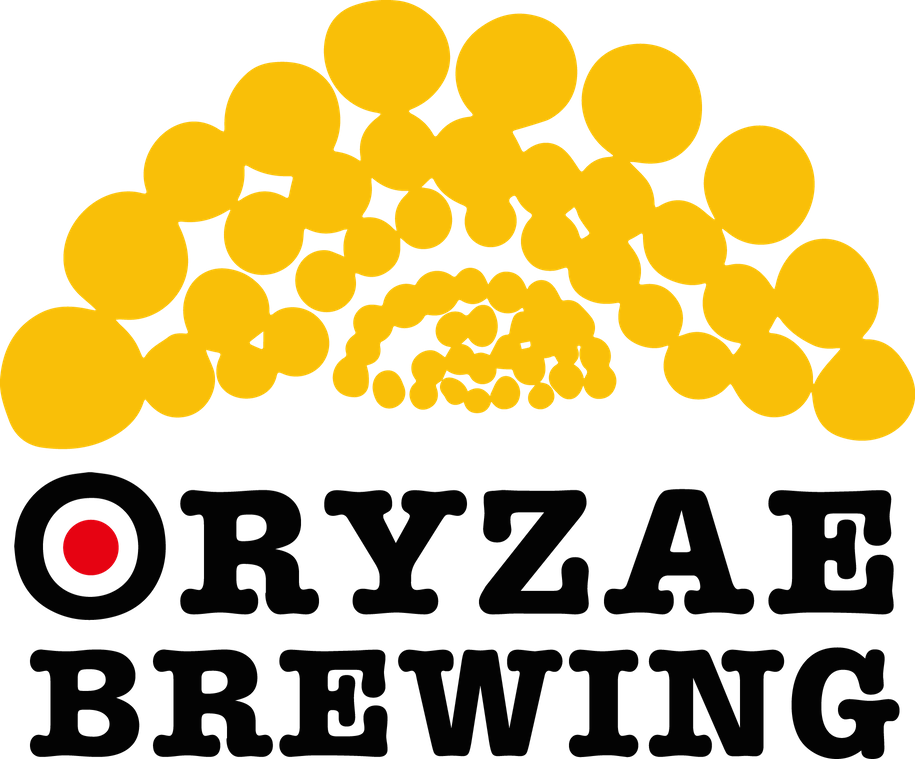The talk about primary fermentation was quite long, wasn't it? Finally, let's move on to the next step. Once fermentation is complete, the beer is cooled to below 5 degrees Celsius and settled. Trub and yeast accumulate at the bottom of the fermentation vessel. If using a conical fermenter, the sediment is drained from the bottom. In the case of barrel fermentation, the beer is transferred to a separate tank, leaving behind the sediment and yeast. After the transfer, carbonation takes place. In the past, at Oryzae Brewing, we used to add carbon dioxide and bottling under counter pressure. Currently, all our beers undergo secondary fermentation in the bottle. This is because Oryzae beers have the characteristic of being less prone to carbon dioxide entering the liquid. It's similar to carbonation in soft drinks. Compared to the regular beer production methods, it requires significantly higher pressure. I'll provide a carbonation pressure chart for reference: https://madrobotbrews.com/wp-content/uploads/2021/01/Carbonation-Chart.pdf (Both Celsius and Fahrenheit are shown in the chart, so I borrowed it from there.) Assuming you have knowledge of carbonation and can understand this chart, I'll continue explaining. As mentioned in the description below the chart, the green cells represent the optimal gas volume range for regular beers, which is between 2.2 and 2.6. In contrast, most of Oryzae beers have a gas volume around 3.9, with only Oryzae Pale Ale, made solely from barley, having a gas volume of around 3.3. Therefore, we have faced significant challenges with carbonation: - Even when pressurizing with a carbonation stone inside the cooling tank, the relief valve would activate. - Bottling becomes foamy and difficult. - Kegs also require different pressure from regular beers, making it challenging to serve from taps. It's not easy to distribute them casually. Among these challenges, the biggest issue is the taste. With regular beers, you don't often notice the aroma or taste of carbon dioxide. However, at this level of gas volume, the beer develops a slightly unique aroma and mouthfeel similar to soda water. I believe sparkling sake probably faces similar issues. To address these problems, we changed to bottle conditioning for carbonation. So, in the next discussion, I will talk about bottle conditioning.
一次発酵のお話し長かったですね。 ようやく、次の工程です。 発酵が終わると、5度以下で冷却しており下げです Trubやイーストが発酵容器の底に貯まります コニカルファーメンターだと、底から澱を抜きます 樽発酵の場合はオリを残して、上澄のビールだけ別のタンクに移動させます 移送後は、カーボネーションですね。 オリゼーブルーイングでも過去には炭酸ガス添加をして カウンタープレッシャーにてボトリングしていました。 現在はすべて瓶内二次発酵商品となっております というのもオリゼービールの液種の特徴として、液の中に炭酸ガスが入り込みにくいという性質があります。 清涼飲料へのカーボネーションに近い感じで、 通常のビールの製造方法と比べると相当ハイプレッシャーです。 参考にビールの強制カーボネーション圧力の表を拝借します https://madrobotbrews.com/wp-content/uploads/2021/01/Carbonation-Chart.pdf (摂氏、華氏どちらも表示されているのでこちらを拝借しています) 炭酸化の知識と、この表を読むことが出来る前提でお話を進めます 表の下の説明にありますように緑のセルの部分が通常のビールの適正ガスボリューム圏内となります 2.2~2.6の間ですね。 それに対し、オリゼービールのほとんどの液種は3.9前後です 原材料が麦だけでできているオリゼーペールエールのみがガスボリューム3.3ぐらい というわけで、このカーボネーションで非常に苦労した経験があります ・冷却タンク内のカーボネーションストーンで加圧しても、リリーフバルブが動作してしまう。 ・ボトリングが泡立って大変 ・ケグも通常のビールと圧力が違うので、タップでのサーブが大変→気軽に外販できない その中でも一番問題だと思っているのが、味の問題です 通常のビールだと炭酸ガスの香りや味などは認知することはあまりないのですが、 このレベルのガスボリュームだと少しラムネソーダのような、独特の炭酸ガスの香りや口当たりになります。 おそらく、スパークリング日本酒でも同様の問題があると思っています。 解決策として炭酸化を瓶内二次発酵に変更しました ボトルコンディションです というわけで次回はボトルコンディショニングについて
